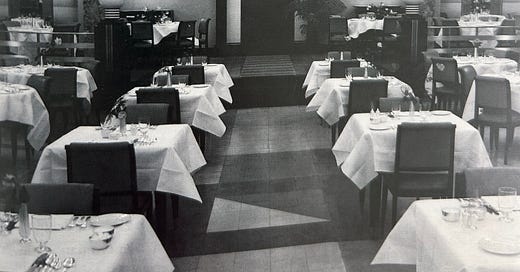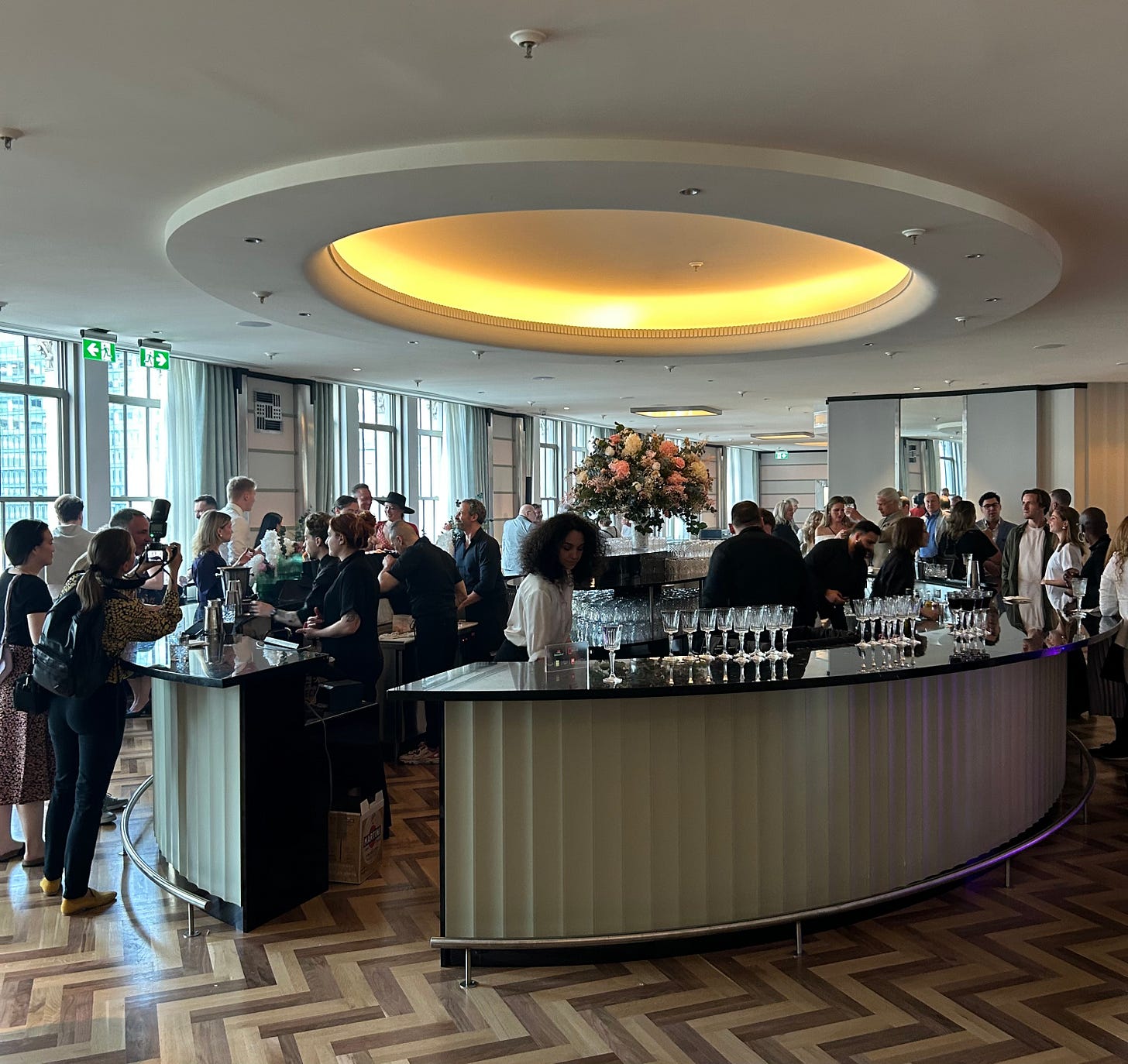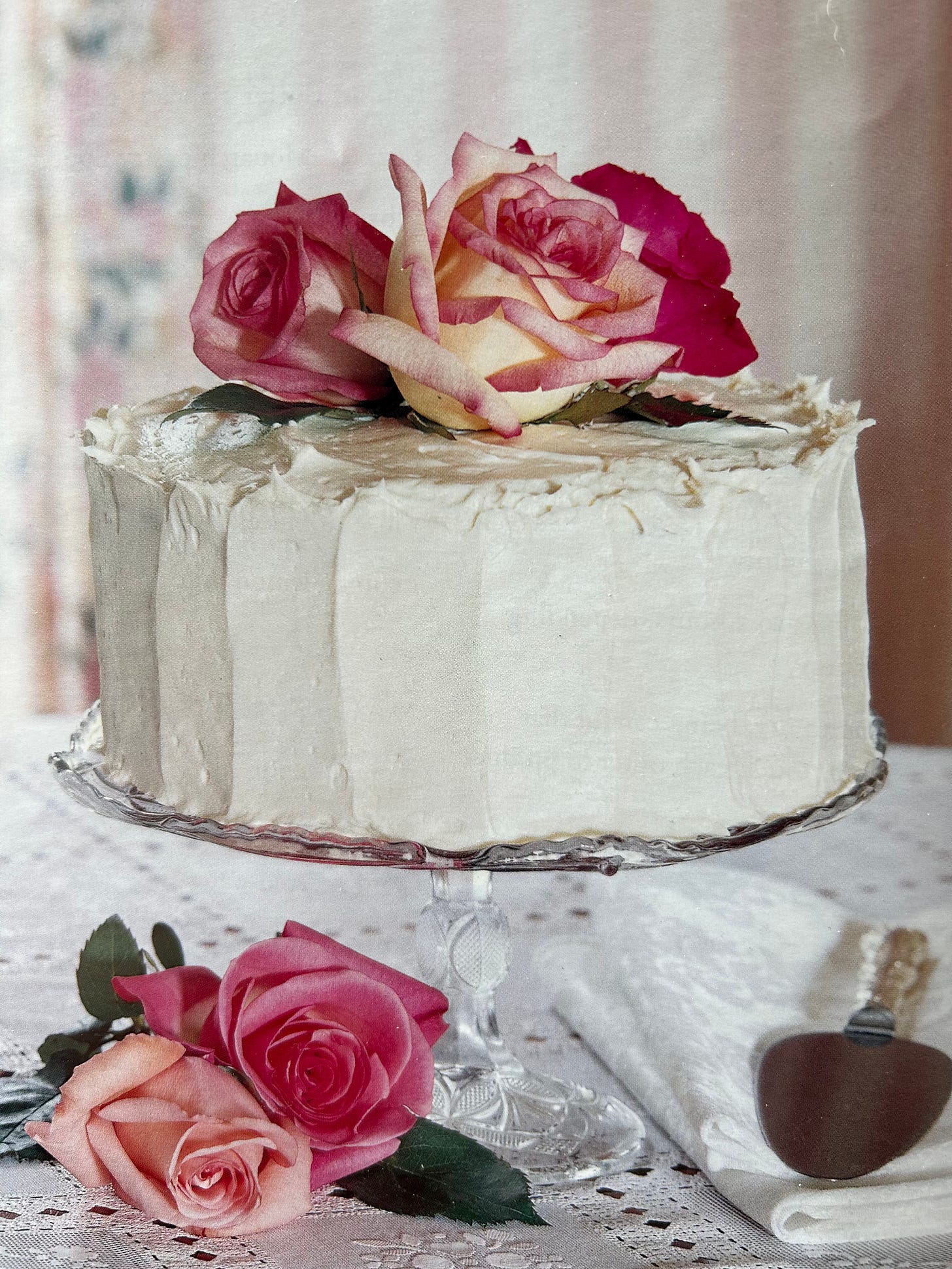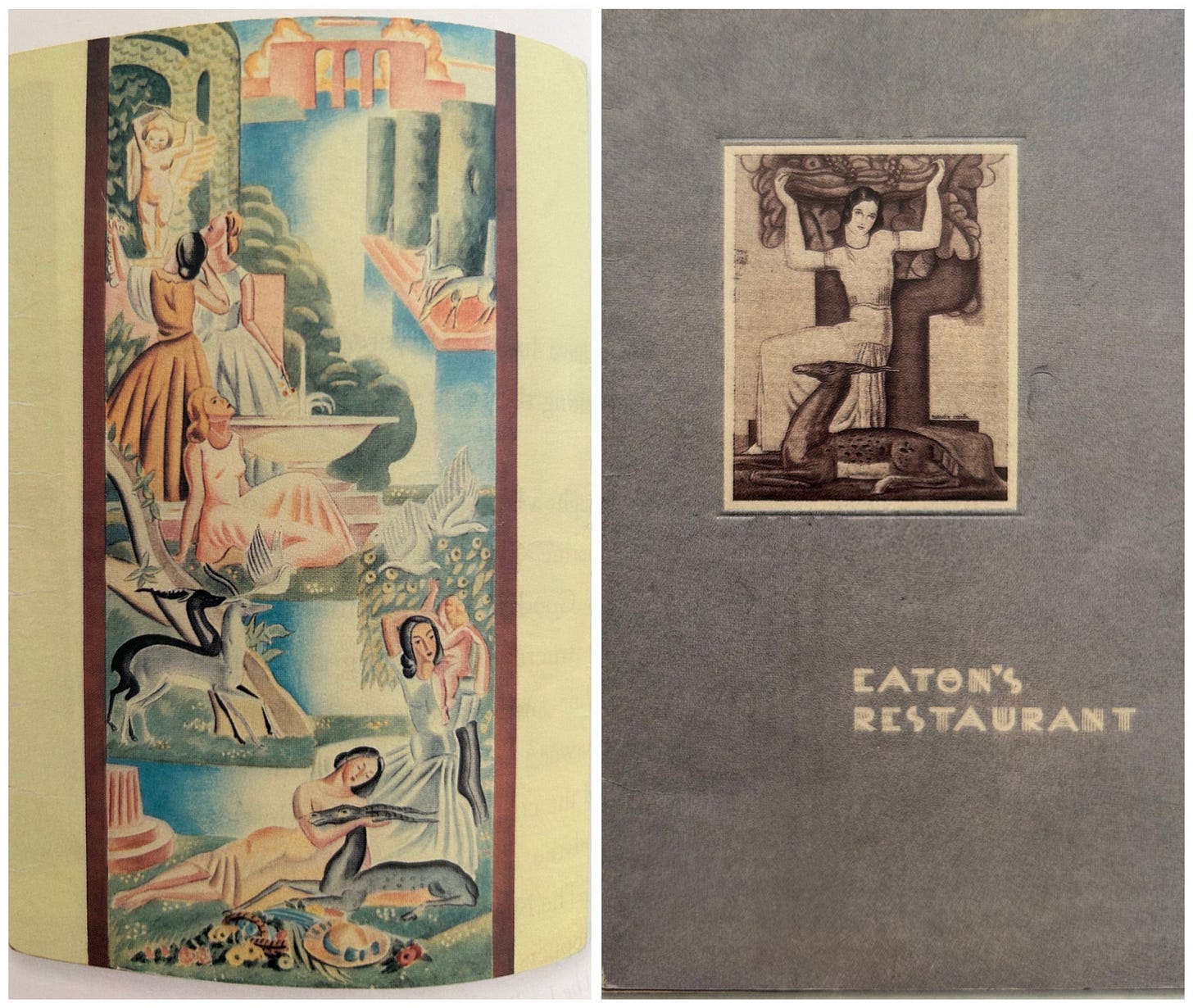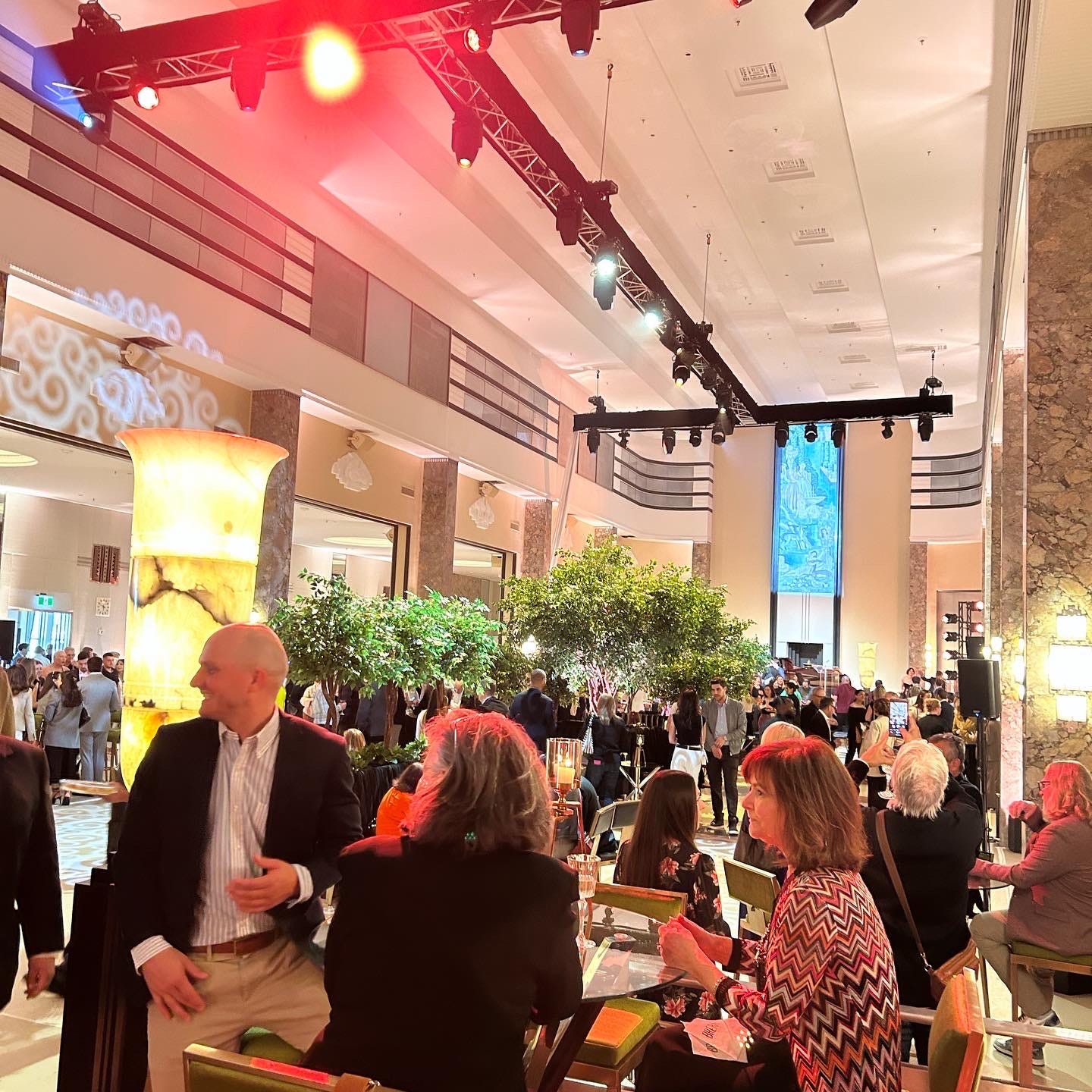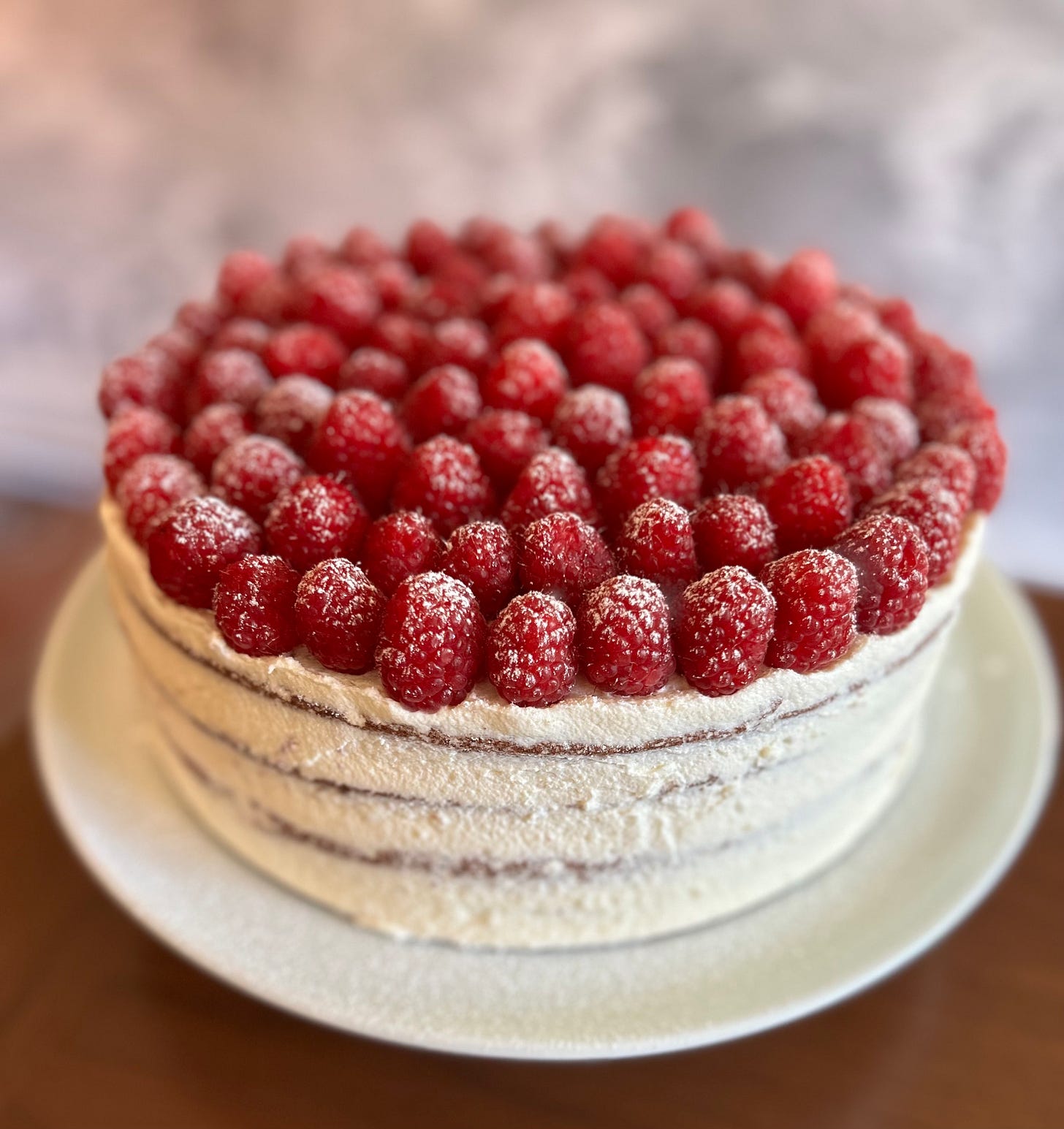The rebirth of a restaurant
After 25 years, the Eaton's 9th floor is back in action (and a cake to celebrate!)
Once described by former restaurant critic Josée Blanchette as a restaurant offering, “anglo lunch fare in outstanding Art Deco surroundings,” Montreal’s Eaton’s 9th floor is back in business as of May 17, but now with dinner fare and even more beautiful Art Deco surroundings.
Ask many a Montrealers about this famous restaurant and they’ll say, “I went there with my grandmother.” Since my grandmother lived in Winnipeg, I’m guessing that’s why I never set foot in this revered 29,000 square foot space. Opened in 1931, the restaurant was part of a second phase of operations four years after the Eaton department store was inaugurated in 1927 the heart of downtown Montreal.
By instructions of Lady Eaton herself, Jacques and Natasha Carlu were hired to design a restaurant based on the Art Moderne look of the passenger liner “Île de France.” Carlu, a French-born architect and professor of design at MIT (Massachusetts Institut of Technology), was also responsible for The Round Room, the Toronto Eaton’s restaurant, and would later go on to design the Rainbow Room atop Rockefeller Center in New York. Everything from the lighting fixtures to the glassware, silverware and china were executed following Carlu’s designs, while Mme Carlu was responsible for the restaurant’s famous murals.
The restaurant was named François Premier after the 15th century French king, but the name never stuck and over time it became known simply as “Le 9ème.” And this 650-seat dining room was posh. The tables were adorned with Irish linens, Royal Worcester china from England, and Czechoslovakian glassware. The original waitresses’ uniforms were pink and grey to match the colours of the room, before switching to black and white over the years.
As for menu items, think chicken pot pie, fish and chips, roast beef, and sole amandine. Desserts included Queen Elizabeth cake, butterscotch pie, and Red Velvet cake.
In 1999, the Eaton’s building was purchased by the Ivanhoe Cambridge real estate group, who transformed the iconic department store into the multi-commerce Eaton Centre. As for the 9th Floor restaurant, it was closed and the space remained empty for the past 25 years.
For a look into the last days of this famous establishment, have a look at this wonderful documentary, Ladies of the 9th Floor.
Because the restaurant has long been considered such a fine example of Art Deco design (much like The Round Room, its sister restaurant in Toronto) the provincial government's Minister of Culture designated the restaurant as a heritage site, guaranteeing the preservation of its décor.
In 2016, Ivanhoe Cambridge was entrusted with the realization of the restaurant’s renaissance, which has been underway ever since. The chairman of the group heading the 9th Floor makeover is Jeff Baikowitz, a Montreal businessman and philanthropist who has also financed many of the city’s top restaurants including Joe Beef, McKiernan, Bistro La Franquette and Park. The renovation work was carried out by EVOQ Architecture, whose goal was to restore the restaurant to the original 1931 design.
Yet today the main dining room will not be used as a restaurant but an event space for up to 500. The restaurant, called Île de France after the ocean liner that inspired Lady Eaton, will be situated in the original foyer around the bar at the end of the corridor leading to the original restaurant. The space will also feature two private dining rooms ( each seats 20) and two bars.
Though the original restaurant originally counted 650 seats and then dropped down to 450, the Île de France now seats but 100. Why? Limited kitchen space, as the original kitchens were torn down after the restaurant closed to build offices. All the food for the event space will be supplied by an outside caterer. The event space will be used for everything from charity galas to weddings, but cultural activities open to the public are planned as well.
As for the restaurant, the group has hired chefs Liam Hopkins (formerly of Hopkins) as executive chef, and Derek Dammann (formerly of Maison Publique) as culinary director. The kitchen staff now counts 25 with Hopkins estimating they will eventually hit 40. The restaurant is now open five days a week for dinner, but will eventual operate for lunch and dinner daily.
Hopkins says the new menu is best described as old-fashioned French, and for inspiration they consulted menus from the early days of the restaurant to the last. “It’s fancy,” says Hopkins, “but not necessarily gourmet and don’t expect tasting menus.” There will be a raw bar, and there’s a $59 prime beef tenderloin with Yorkshire pudding. But with items like a $19 hamburger and $29 fish and chips, their aim is to make it accessible to all.
Accessible to all, that is, who can nab a reservation. Right now tables are beyond scarce as there’s not much available until — get this — the fall. But Hopkins seems nonplussed about the wait. “Be patient,” he says, We’re rolling out tables progressively. We intend to be here for a while.”
_______________________________________________
To give you a sense of the vintage feel of the old restaurant I’ve decided to share a recipe for The Round Room’s famous Red Velvet Cake. This version of the beloved Southern layer cake was an exclusive of Eaton’s and employees who made it could neither sell nor reveal the recipe, which was kept under lock and key.
I followed the recipe but felt it could use some tweaking while maintaining the integrity of the original. So I doubled the amount of frosting and upped the aromatics to make it more delicious. It’s quite a showstopper of a cake.
This recipe comes from the book, Lunch with Lady Eaton: Inside the Dining Rooms of a Nation by Carol Anderson and Katherine Mallison (ECW Press 2004) generously given to me by my friend, Laura Calder. Thanks Laura!
Round Room Red Velvet Cake
Serves 12-16
Keep reading with a 7-day free trial
Subscribe to Lick my Plate to keep reading this post and get 7 days of free access to the full post archives.

